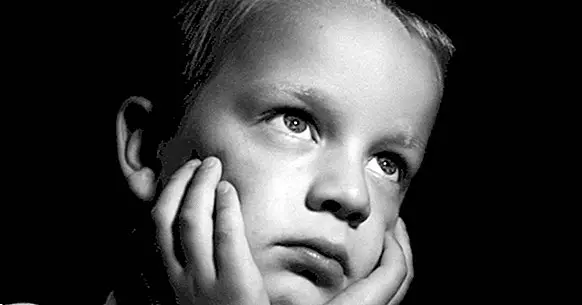Positive Punishment and Negative Punishment: how do they work?
People behave differently according to the situation. We try to adapt our behavior to the situations we live in, so that it is adaptive in the natural and social environment. However, in some cases they are carried out different behaviors that are maladaptive , they do not adapt or allow a good coexistence or they make the relationship between peers difficult.
Sometimes it may be necessary to make a modification of these behaviors. Two of the most basic procedures when modifying behaviors, especially when it comes to reducing their frequency, are positive punishment and negative punishment . How do they work?
- Related article: "5 behavior modification techniques"
Punishment as a behavior modification technique
Punishment is a type of behavior modification technique based on behaviorism, specifically on operant conditioning, which is based on the fact that the conduct of a behavior and its frequency is influenced by the consequences of such behavior.
If a behavior has as a consequence the administration of some kind of reinforcer If the desired or the avoidance or withdrawal of an aversive stimulus the behavior will become more frequent, while if instead the consequence is the appearance of aversive stimulation or the withdrawal of reinforcing stimuli the behavior will tend to decrease.
In the case of punishment, we would be faced with a type of procedure through which it is intended influence the frequency of a behavior to cause a decrease in this , or its complete elimination.
There are two types of punishment depending on whether they act through the administration of aversive stimuli or the elimination of a positive stimulation: positive punishment and negative punishment respectively. In both cases the punishment must be applied contingently to the behavior to be reduced , so that it can be considered a consequence of the action.
- Maybe you're interested: "The 10 most used cognitive-behavioral techniques"
Positive Punishment
The positive punishment is that in which an aversive stimulus is applied for the subject before the performance of a certain behavior, making the stimulus a consequence of its performance, in order that the individual decreases the frequency or stops performing the behavior in question.
In this way, the basic mechanism of positive punishment is to present an unpleasant stimulus each time the person does the unwanted behavior. It is recommended that stimulations be used consistently, so that behavior always follows the consequence. Behavior modification occurs as a way on the part of the subject of avoid or escape aversive stimulation .
Positive punishment is a procedure on which various techniques are based, such as the set of aversive therapies (electrical, olfactory, gustatory, tactile, auditory, chemical or covert), satiation as a massive practice in different addictive disorders, overcorrection or the facial screen.
The Negative Punishment
The basic operation of negative punishment it is based on the withdrawal of a desired stimulus and reinforcement by the subject before the realization of a specific behavior, so that the subject decreases its frequency in prevention of such loss.
In short, the negative punishment removes something that the person wants each time he does the unwanted behavior. In this sense we must take into account that the stimulus to withdraw is significant for the person , otherwise it would have no effect.
Procedures based on negative punishment include techniques such as time out, response costs, and are part of others such as the contingency contract.
Uses and considerations regarding the effectiveness of these techniques
Both positive punishment and negative punishment have been applied in various contexts. Education is applied in clinical practice , the world of the company or even on a legal level (legal sanctions can be considered positive or negative punishments).
Both types of punishment are procedures that succeed in decreasing or even extinguishing behaviors fairly quickly. If you opt for its application, must be executed consistently and contingent on the behavior and proportional to the severity of the behavior.
However, we must bear in mind that the change they produce is usually only superficial and based on fear of punishment, not generating a real change in attitudes in most cases.
In addition, it can cause fear to spread and cause fear towards the person or institution that applies the punishment, as well as resentment towards this . The relationships with which the punishment applies, then, can get worse substantially, in the worst case. It also worsens the sense of control and self-esteem if the causes of the punishment are not understood or what to do to act correctly.
- Related article: "The 8 reasons for not using corporal punishment towards children"
Bibliographic references:
- Almond, M.T. (2012). Psychotherapies CEDE Preparation Manual PIR, 06. CEDE: Madrid.
- Horse, V. (1991). Manual of Therapy Techniques and Behavior Modification. XXI century. Madrid.
- Domjan, M. & Burkhard, B. (1990). Principles of learning and behavior. Debate. Madrid.
- Labrador F.J .; Cruzado F. J. & López, M. (2005). Manual of behavior modification and therapy techniques. Pyramid: Madrid.



















